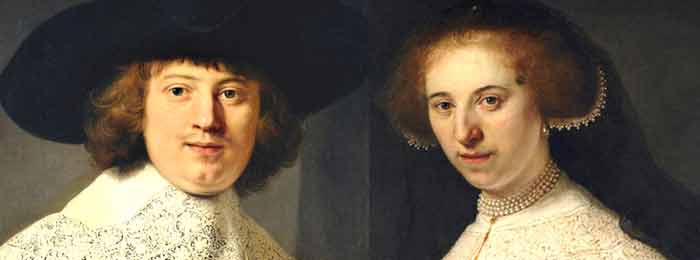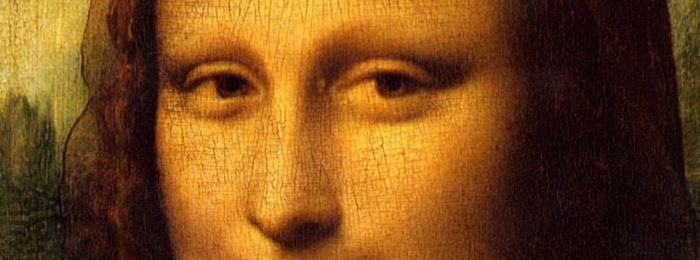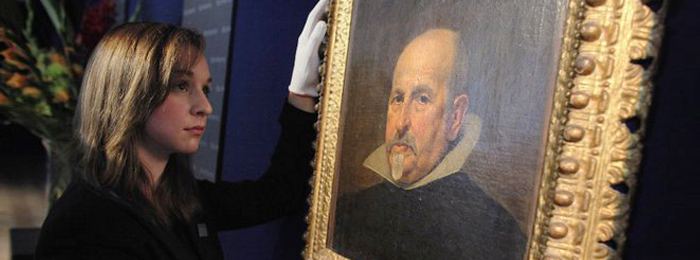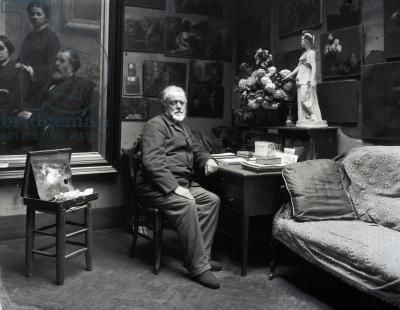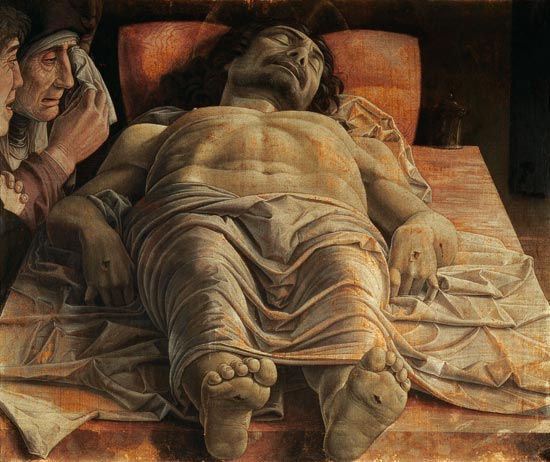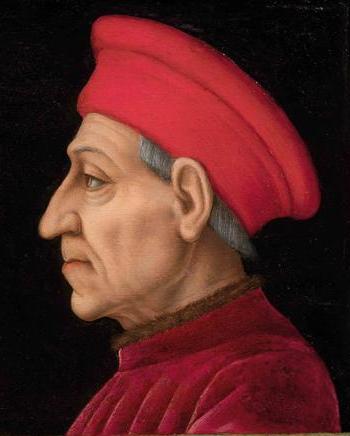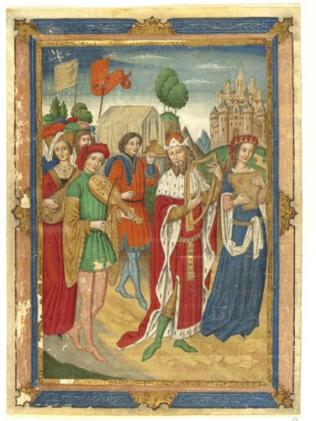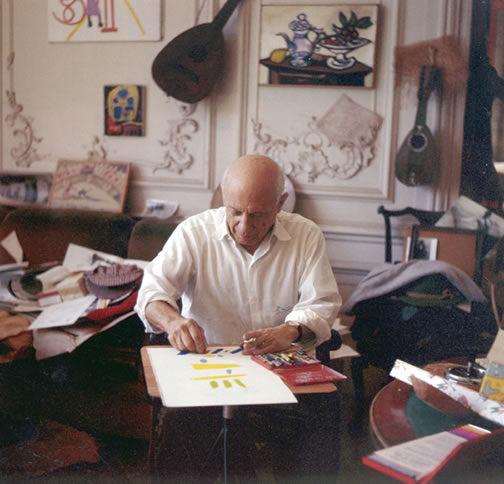On 29 May, 2018 With
Botticelli’s talent was soon recognized and by 1470 he had his own workshop. In 1472 he joined the local painters’ guild. He painted small religious works until 1474, when he received a commission to paint the monumental St. Sebastian for the church of Santa Maria Maggiore in Florence. His work was in favor with members of the Medici clan, who were the ruling family of Florence, and in 1475 he painted the Adoration of the Magi in which he included portraits of some Medici family members. The Medicis commissioned many works from Botticelli, paying him handsomely. Sandro Botticelli was deeply influenced by the artists and intellectuals who surrounded Lorenzo di Medici and by their ideas, which aimed to bring together…
Read More
On 1 Feb, 2016 With
France and the Netherlands signed a historic deal on Monday acquiring two large Rembrandt portraits for €160 million ($174 million), the French culture ministry announced.
He added it was a new concept in the museum world for two countries to work together to obtain works from a private collection.
In 1634, the year Rembrandt completed the portraits of Maerten Soolmans and Oopjen Coppit, he was, at the age of only 28, the most fashionable portrait painter in Amsterdam.
These portraits are among the grandest he ever painted —lasting tributes to the status of his sitters and the importance of their patronage to the young artist. …
Read More
On 14 Jul, 2015 With
Vitruvian Man Helps Decode the Mona Lisa The Yin and Yang qualities of the two cojoined forms of the Vitruvian Man and those of the Mona Lisa (both considered to be self portraits of Leonardo Da Vinci)help us to experience our own wholeness. This leads to greater peace and happiness. These Yin and Yang qualities are also found in the Star of David and Christian Cross. Leonardo said it best: “The outstretched arms and legs of a man form a square and a circle: the square symbolizes the solid physical world and the circle the spiritual and eternal. Man bridges the gap between these two worlds.” -Leonardo Da Vinci, “The Magical Proportions of Man” Leonardo Da Vinci’s Vitruvian Man (the…
Read More
On 30 Jun, 2015 With
Newly-discovered Velazquez portrait A Trinity College Dublin lecturer has discovered a previously unknown painting by the artist Diego Velazquez. The 300-year-old portrait of a man was thought to belong to a minor 19th century British artist until Dr Peter Cherry identified it as the work of the Spanish master. Velazquez is regarded as one of the greatest painters of all time. There are only 100 known paintings by him worldwide. The painting was offered for sale among other more ordinary works at an auction in Oxford. But the auction house contacted Dr Cherry of Trinity’s Department of Art and Architecture after some details in the painting aroused interest. A former student of Dr Cherry’s worked at the auction house, Bonhams….
Read More
On 5 Aug, 2011 With
Henri Fantin-Latour (14 January 1836 – 25 August 1904) was a French painter and lithographer best known for his flower paintings and group portraits of Parisian artists and writers. As a youth, he received drawing lessons from his father, who was an artist. In 1850 he entered the Ecole de Dessin, where he studied with Lecoq de Boisbaudran. After studying at the École des Beaux-Arts in Paris from 1854, he devoted much time to copying the works of the old masters in the Louvre. Although he befriended several of the young artists who would later be associated with Impressionism, including Whistler and Manet, Fantin’s own work remained conservative and classical in style. Whistler brought attention to Fantin in England, where his still-lifes sold so well that they were “practically unknown in France during his lifetime”. In addition to his realistic paintings, Fantin-Latour created imaginative lithographs inspired by…
Read More
On 23 Jan, 2011 With
Classical painting techniques in Renaissance – Foreshortening Part 4 Foreshortening refers to the visual effect or optical illusion that an object or distance appears shorter than it actually is because it is angled toward the viewer. Although foreshortening is an important element in art where visual perspective is being depicted, foreshortening occurs in other types of two-dimensional representations of three-dimensional scenes. Some other types where foreshortening can occur include oblique parallel projection drawings. Figure F1 shows two different projections of a stack of two cubes, illustrating oblique parallel projection foreshortening (“A”) and perspective foreshortening (“B”). This technique was often used in Renaissance painting.
Read More
On 20 Jan, 2011 With
Classical painting techniques – Renaissance art Part 2 Influences: The influences upon the development of Renaissance art in the early 15th century are those that also affected Philosophy, Literature, Architecture, Theology, Science, Government and other aspects of society. The following list presents a summary, dealt with more fully in the main articles that are cited above. 1. Classical texts, lost to European scholars for centuries, became available. These included Philosophy, Poetry, Drama, Science, a thesis on the Arts and Early Christian Theology. 2. Simultaneously, Europe gained access to advanced mathematics which had its provenance in the works of Islamic scholars. 3. The advent of movable type printing in the 15th century meant that ideas could be disseminated easily, and an…
Read More
On 19 Jan, 2011 With
Classical painting techniques. Part 1 Renaissance art is the painting, sculpture and decorative arts of that period of European history known as the Renaissance, emerging as a distinct style in Italy in about 1400, in parallel with developments which occurred in philosophy, literature, music and science. Renaissance art, perceived as a “rebirth” of ancient traditions, took as its foundation the art of Classical antiquity, but transformed that tradition by the absorption of recent developments in the art of Northern Europe and by application of contemporary scientific knowledge. Renaissance art, with Renaissance Humanist philosophy, spread throughout Europe, affecting both artists and their patrons with the development of new techniques and new artistic sensibilities. Renaissance art marks the transition of Europe from…
Read More
On 30 Dec, 2010 With
The Spanish Forger is the name given to an unidentified individual who, in the late 19th to early 20th century, created a large number of forgeries of medieval miniatures. The Spanish Forger’s works were painted on vellum or parchment leaves of genuine medieval books, using either blank margins or scraping off the original writing. He also “completed” unfinished miniatures or added missing miniatures in medieval choir books. His works fooled many experts and collectors and appear today in the collections of many museums and libraries. Over 200 forgeries have been identified. Although he was originally thought to be Spanish, it is now believed he may have been French, working in Paris. A number of his forged miniatures have been identified as copied, with modifications,…
Read More
On 21 Nov, 2010 With
Picasso was the first rock-star artist, whose wild visions gripped the public imagination and changed 20th-century art for ever. But his flamboyant personality divided opinion. Was he a playful genius, as some suggest, or a capricious and cruel misanthrope who left battered lives in his wake? On the eve of a new show in London, we speak to his closest friends and family in a bid to unravel the enigma. “Picasso,” the surrealist poet Paul Eluard said, “paints like God or the devil.” Picasso favoured the first option. “I am God,” he was once heard telling himself. He muttered the mantra three times, boasting of his power to animate and enliven the visible world. Any line drawn by his hand…
Read More


